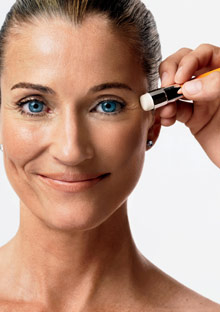
Photo: Timothy Hogan
Lines you wish you could erase? Splotches you'd like to zap? Wrinkles that need smoothing out? Dermatologists are standing by! We've scored you consultations with six of the country's top skin specialists (no scheduling, no waiting-room clock watching, no fee). Their Rx's range from surprisingly simple to downright space-age. Whatever your complexion problem, you've got options. Click on a problem for your first appointment.
If your problem is... Plus, find out how to make the most of a consultation with a skin fixer and discover 5 promising new skin creams
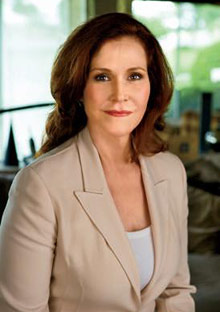
Photo: Tammy Duvic
Your Dermatologist: Mary Lupo, MD, New Orleans
"Dermatologists define wrinkles as lines that are visible even when your face is totally relaxed. For prevention and a slight correction of these etched-in creases, apply sunscreen in the morning and a prescription retinoid (an effective line-smoother) at night. The combination will improve the texture of the skin over several months. But deep wrinkles are caused in large part by a loss of volume in the tissue below the skin, which only injections of filler substances can restore. If you're open to fillers, I recommend either Radiesse or Sculptra. Radiesse is made of calcium-based beads that form a structure under the skin around which new collagen forms; it lasts up to 18 months. Sculptra is a form of synthetic lactic acid that triggers skin cells to make more collagen, and can last two years or a little more. Both need to be injected quite deeply, most often in the cheeks—volume loss in that area creates the deep wrinkles between the nose and the corners of the mouth. Hyaluronic acid fillers (like Restylane, Juvéderm, and Perlane) can also plump up deeper folds, but results last only about six months. If you're not ready for a big commitment, though, they're a good option. They're also the best choice for deeper lines around the mouth. (Sculptra and Radiesse can create bumps in that area.)
"To smooth more than just a few individual wrinkles, I would suggest a resurfacing laser. A nonablative version (in which the skin's surface is kept intact), like the Fraxel Re:store, involves about three days of downtime, and you need five to six treatments; I generally use it on patients under 50. If you're over 50 and your lines are quite deep, I recommend an ablative (meaning the skin's top layers are removed) resurfacing treatment, like Fraxel Re:pair or TotalFX. One treatment gives my patients in their 50s and 60s profound improvement of deep wrinkles. We can treat the whole face or—if the wrinkles are concentrated around the eyes or mouth and you have relatively fair, even-toned skin—we can spot-treat those areas. The treatments are painful, so we use a topical anesthetic, mild sedation, and nerve block injections (like what you'd get at the dentist). And expect a good week of downtime; I always show patients pictures of what their face will look like on day three—red, swollen, oozing—so they know what they're getting into. You'll see the full results after about six months (the treatment works by causing collagen to rebuild, which takes some time) and they should last several years."

Your Options:
"Dermatologists define wrinkles as lines that are visible even when your face is totally relaxed. For prevention and a slight correction of these etched-in creases, apply sunscreen in the morning and a prescription retinoid (an effective line-smoother) at night. The combination will improve the texture of the skin over several months. But deep wrinkles are caused in large part by a loss of volume in the tissue below the skin, which only injections of filler substances can restore. If you're open to fillers, I recommend either Radiesse or Sculptra. Radiesse is made of calcium-based beads that form a structure under the skin around which new collagen forms; it lasts up to 18 months. Sculptra is a form of synthetic lactic acid that triggers skin cells to make more collagen, and can last two years or a little more. Both need to be injected quite deeply, most often in the cheeks—volume loss in that area creates the deep wrinkles between the nose and the corners of the mouth. Hyaluronic acid fillers (like Restylane, Juvéderm, and Perlane) can also plump up deeper folds, but results last only about six months. If you're not ready for a big commitment, though, they're a good option. They're also the best choice for deeper lines around the mouth. (Sculptra and Radiesse can create bumps in that area.)
"To smooth more than just a few individual wrinkles, I would suggest a resurfacing laser. A nonablative version (in which the skin's surface is kept intact), like the Fraxel Re:store, involves about three days of downtime, and you need five to six treatments; I generally use it on patients under 50. If you're over 50 and your lines are quite deep, I recommend an ablative (meaning the skin's top layers are removed) resurfacing treatment, like Fraxel Re:pair or TotalFX. One treatment gives my patients in their 50s and 60s profound improvement of deep wrinkles. We can treat the whole face or—if the wrinkles are concentrated around the eyes or mouth and you have relatively fair, even-toned skin—we can spot-treat those areas. The treatments are painful, so we use a topical anesthetic, mild sedation, and nerve block injections (like what you'd get at the dentist). And expect a good week of downtime; I always show patients pictures of what their face will look like on day three—red, swollen, oozing—so they know what they're getting into. You'll see the full results after about six months (the treatment works by causing collagen to rebuild, which takes some time) and they should last several years."

Loss of volume in the tissue below the skin (not years of smiling) is largely the cause of deep wrinkles. Fillers can help plump them up.
Your Options:
- A.M.: Sunscreen (like Neutrogena Ultra Sheer Dry-Touch Sunblock SPF 55, $11)
- P.M.: Prescription retinoid, $40+
- Hyaluronic acid filler, every six months, $500 to $600
- Radiesse, every 18 months, $750; Sculptra, every two years, $1,000
- Five to six fractional nonablative laser treatments, every two to four weeks, $750 to $1,500 each
- One fractional ablative laser treatment, $1,500 to $8,000 (depending on size of area treated)
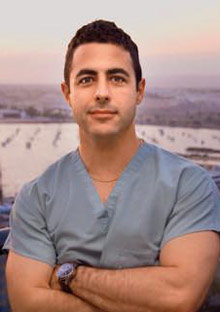
Photo: Courtesy of Jeffrey Benabio
Your Dermatologist: Jeffrey Benabio, MD, San Diego
"I need to determine the cause of your redness before I can prescribe the most effective treatment. If I look closely at your skin and see lots of tiny threadlike blood vessels just below the surface, for example, you're probably dealing with sun damage. Over time, UV exposure encourages the formation of these vessels. A laser treatment is the most effective solution; it can literally explode the little vessels—and that unwanted redness along with them. To treat dense clusters of blood vessels, around the nose, for example, I generally choose a KTP laser. I usually get the job done in one or two intense treatments; you'll look bruised for several days. (If I use lower-energy settings, you need more treatments but experience less bruising.) For diffuse redness, intense pulsed light (IPL) treatments are a better option; most patients require about four sessions, but there is minimal downtime.
"If your skin stings when exposed to sun or cold, or if it gets rosier when you eat spicy foods, you might have rosacea, a chronic inflammatory condition that manifests itself as a butterfly pattern of redness across the nose and cheeks, sometimes accompanied by small pimples. A topical antibiotic, like MetroGel or Sulfacet, is the simplest way to clear up the symptoms—usually in about two months. If you want faster results, a KTP laser or IPL treatment will reduce redness within days; you can then keep your skin clear with a topical antibiotic.
"Redness accompanied by flaking could be seborrheic dermatitis or eczema, for which I often prescribe a two-week course of a topical immunomodulator like Elidel, which blocks inflammation. If you're also experiencing some itching, you could have contact dermatitis, a reaction to a particular allergen. Common culprits are chemical sunscreens, certain cosmetic preservatives, hair dyes, and fragrances. I can do a patch test to determine if you have a skin allergy, and then give you a list of products to avoid (once you do, the redness should clear up quickly). If your redness has developed suddenly and it's not contact dermatitis, I might suggest getting a blood test to rule out an autoimmune disease like lupus.
"Whatever the source of your redness, you must be diligent about sunscreen—the sun exacerbates every root problem. Formulas containing physical blockers, like zinc oxide and titanium dioxide, tend to be the least irritating and are sometimes even soothing. Over-the-counter anti-inflammatory lotions can also temporarily reduce redness; look for ones with feverfew or licorice."
Your Options:
"I need to determine the cause of your redness before I can prescribe the most effective treatment. If I look closely at your skin and see lots of tiny threadlike blood vessels just below the surface, for example, you're probably dealing with sun damage. Over time, UV exposure encourages the formation of these vessels. A laser treatment is the most effective solution; it can literally explode the little vessels—and that unwanted redness along with them. To treat dense clusters of blood vessels, around the nose, for example, I generally choose a KTP laser. I usually get the job done in one or two intense treatments; you'll look bruised for several days. (If I use lower-energy settings, you need more treatments but experience less bruising.) For diffuse redness, intense pulsed light (IPL) treatments are a better option; most patients require about four sessions, but there is minimal downtime.
"If your skin stings when exposed to sun or cold, or if it gets rosier when you eat spicy foods, you might have rosacea, a chronic inflammatory condition that manifests itself as a butterfly pattern of redness across the nose and cheeks, sometimes accompanied by small pimples. A topical antibiotic, like MetroGel or Sulfacet, is the simplest way to clear up the symptoms—usually in about two months. If you want faster results, a KTP laser or IPL treatment will reduce redness within days; you can then keep your skin clear with a topical antibiotic.
"Redness accompanied by flaking could be seborrheic dermatitis or eczema, for which I often prescribe a two-week course of a topical immunomodulator like Elidel, which blocks inflammation. If you're also experiencing some itching, you could have contact dermatitis, a reaction to a particular allergen. Common culprits are chemical sunscreens, certain cosmetic preservatives, hair dyes, and fragrances. I can do a patch test to determine if you have a skin allergy, and then give you a list of products to avoid (once you do, the redness should clear up quickly). If your redness has developed suddenly and it's not contact dermatitis, I might suggest getting a blood test to rule out an autoimmune disease like lupus.
"Whatever the source of your redness, you must be diligent about sunscreen—the sun exacerbates every root problem. Formulas containing physical blockers, like zinc oxide and titanium dioxide, tend to be the least irritating and are sometimes even soothing. Over-the-counter anti-inflammatory lotions can also temporarily reduce redness; look for ones with feverfew or licorice."
Your Options:
- A.M.: Physical sunscreen (like NIA 24 Sun Damage Prevention 100% Mineral Sunscreen SPF 30, $45)
- A.M. or P.M.: Products with feverfew (like Aveeno Ultra-Calming Moisturizing Cream Cleanser, $7) or licorice (Eucerin Redness Relief Soothing Night Crème, $15)
- One to six monthly KTP laser treatments, $300 to $500 each, or IPL treatments, $250 to $450 each
- For rosacea: Topical antibiotic, $30+
- For eczema: Topical immunomodulator, $90+
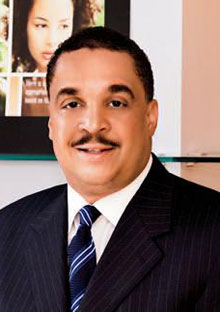
Photo: Portrait Artist, Jackie Hicks
Your Dermatologist: Eliot Battle, MD, Washington, D.C.
"Before I address your aesthetic questions, I'll need to make sure that none of your dark spots are potentially cancerous. The vast majority of skin discolorations are harmless, but in some cases, I might have to do a biopsy. Once I've given you a clean bill of health, I can determine the cause of the discoloration. It is likely one of three things: melasma (relatively symmetrical discoloration on the temples, forehead, chin, and bridge of the nose, most often triggered by hormonal changes), sun damage (usually a more diffuse speckling, brought on by years of UV exposure), or post-inflammatory hyperpigmentation (concentrated areas of darkness that form after the skin is injured, most common in dark skin).
"If you've noticed discoloration only recently, the pigment is probably confined to the most superficial layers of the skin; exfoliating products can fade it. Try cleansers and moisturizers that contain glycolic or lactic acid. If you have light skin, you can also use physical exfoliants, which buff off dead skin with tiny beads; I tell dark-skinned patients to avoid them, though, because they can produce inflammation that could lead to more dark spots. Over-the-counter exfoliators (ideally combined with a couple of monthly in-office chemical peels) make a big difference within six to eight weeks. I might also suggest a hydroquinone lotion, which inhibits the pigment-forming enzyme tyrosinase. You can get a 2 percent concentration over-the-counter, but it takes many months to yield results. I prescribe 4 percent or more; women with darker skin have darker spots and can tolerate up to 12 percent. (I would rather prescribe a higher strength that you will need to use for only three to six weeks.)
"If a dark patch has been present for a year or more, the pigment is probably pretty deep beneath the skin; a laser is the best option to get rid of it. On light skin, I use the Q-switched or KTP laser, which feels like rubber-band snaps; you'll have a few scabs afterward that fall away after about two weeks. One or two treatments are usually enough to vaporize specific dark spots. Lighter-skinned patients with more diffuse pigmentation do beautifully with four or five monthly intense pulsed light (IPL) treatments. IPL minimizes discoloration and other symptoms of sun damage, like broken blood vessels and enlarged pores; it's painless and doesn't involve downtime. For darker-skinned patients, I usually recommend fractional nonablative lasers, like the Fraxel Re:store. I turn down the energy on the machine so patients don't leave the office red or swollen, and there's no risk of causing post-inflammatory hyperpigmentation. These less-intense treatments do necessitate four to six sessions, though.
"And use sunscreen daily. If you don't, you're just chasing your tail—and wasting your money—by coming to me for treatment. The sun causes discoloration in any skin tone—creating new dark patches, as well as exacerbating melasma and post-inflammatory hyperpigmentation."

Your Options:
"Before I address your aesthetic questions, I'll need to make sure that none of your dark spots are potentially cancerous. The vast majority of skin discolorations are harmless, but in some cases, I might have to do a biopsy. Once I've given you a clean bill of health, I can determine the cause of the discoloration. It is likely one of three things: melasma (relatively symmetrical discoloration on the temples, forehead, chin, and bridge of the nose, most often triggered by hormonal changes), sun damage (usually a more diffuse speckling, brought on by years of UV exposure), or post-inflammatory hyperpigmentation (concentrated areas of darkness that form after the skin is injured, most common in dark skin).
"If you've noticed discoloration only recently, the pigment is probably confined to the most superficial layers of the skin; exfoliating products can fade it. Try cleansers and moisturizers that contain glycolic or lactic acid. If you have light skin, you can also use physical exfoliants, which buff off dead skin with tiny beads; I tell dark-skinned patients to avoid them, though, because they can produce inflammation that could lead to more dark spots. Over-the-counter exfoliators (ideally combined with a couple of monthly in-office chemical peels) make a big difference within six to eight weeks. I might also suggest a hydroquinone lotion, which inhibits the pigment-forming enzyme tyrosinase. You can get a 2 percent concentration over-the-counter, but it takes many months to yield results. I prescribe 4 percent or more; women with darker skin have darker spots and can tolerate up to 12 percent. (I would rather prescribe a higher strength that you will need to use for only three to six weeks.)
"If a dark patch has been present for a year or more, the pigment is probably pretty deep beneath the skin; a laser is the best option to get rid of it. On light skin, I use the Q-switched or KTP laser, which feels like rubber-band snaps; you'll have a few scabs afterward that fall away after about two weeks. One or two treatments are usually enough to vaporize specific dark spots. Lighter-skinned patients with more diffuse pigmentation do beautifully with four or five monthly intense pulsed light (IPL) treatments. IPL minimizes discoloration and other symptoms of sun damage, like broken blood vessels and enlarged pores; it's painless and doesn't involve downtime. For darker-skinned patients, I usually recommend fractional nonablative lasers, like the Fraxel Re:store. I turn down the energy on the machine so patients don't leave the office red or swollen, and there's no risk of causing post-inflammatory hyperpigmentation. These less-intense treatments do necessitate four to six sessions, though.
"And use sunscreen daily. If you don't, you're just chasing your tail—and wasting your money—by coming to me for treatment. The sun causes discoloration in any skin tone—creating new dark patches, as well as exacerbating melasma and post-inflammatory hyperpigmentation."

Reliable weapons in the war against unattractive dark spots: laser treatments. One or two can easily vaporize them.
Your Options:
- A.M.: Sunscreen
- A.M./P.M.: Glycolic or lactic acid cleanser and moisturizer
- Hydroquinone cream, OTC (like Ambi Fade Cream, $6), or prescription, $50, three to 24 weeks
- Two or three monthly chemical peels, $100 to $150 each
- For lighter skin: One or two KTP or Q-switched laser treatments, $250 to $500 each, or four to six monthly IPL treatments, $250 to $350 each
- For darker skin: Four to six monthly fractional nonablative laser treatments, $750 to $1,500 each
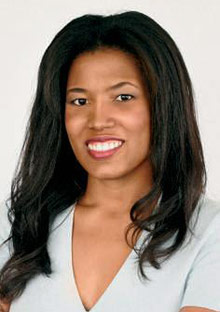
Photo: Rafael Balcazar
Your Dermatologist: Heather Woolery-Lloyd, MD, Miami
"Fine lines are generally about 20 percent genetic and 80 percent environmental (in other words, brought on by the sun and smoking). They usually occur in the most expressive areas of your face—like around the eyes—but if you were never in the sun, you could smile and squint all day every day and still have very few lines. So if you're not wearing sunscreen: Start now. It won't get rid of the lines you have, but it will prevent new ones from forming. And begin using a prescription retinoid cream nightly; I often prescribe Renova because patients find it less drying than other formulas. You'll notice lines softening in two to three months.
"If you want to be more aggressive, you could try Botox, a botulinum toxin that blocks the nerve impulses that cause muscle activity—and expression lines. I can inject it around the eyes, between the brows, across the forehead; the lines in those areas then fade away over about a week. The shot feels like a quick pinch, and there's rarely bruising or swelling afterward; results should last three months or more. Another botulinum toxin, Dysport, was approved by the FDA just this spring. It works more quickly than Botox, in about three days, and it may last longer."
Your Options:
"Fine lines are generally about 20 percent genetic and 80 percent environmental (in other words, brought on by the sun and smoking). They usually occur in the most expressive areas of your face—like around the eyes—but if you were never in the sun, you could smile and squint all day every day and still have very few lines. So if you're not wearing sunscreen: Start now. It won't get rid of the lines you have, but it will prevent new ones from forming. And begin using a prescription retinoid cream nightly; I often prescribe Renova because patients find it less drying than other formulas. You'll notice lines softening in two to three months.
"If you want to be more aggressive, you could try Botox, a botulinum toxin that blocks the nerve impulses that cause muscle activity—and expression lines. I can inject it around the eyes, between the brows, across the forehead; the lines in those areas then fade away over about a week. The shot feels like a quick pinch, and there's rarely bruising or swelling afterward; results should last three months or more. Another botulinum toxin, Dysport, was approved by the FDA just this spring. It works more quickly than Botox, in about three days, and it may last longer."
Your Options:
- A.M.: Sunscreen (like Olay Complete Defense Daily UV Moisturizer SPF 30, $15)
- P.M.: Prescription retinoid, $40+
- Botox or Dysport injections, every three months, $300 to $500 for each area treated

Photo: Courtesy of Macrene Alexiades-Armenakas
Your Dermatologist: Macrene Alexiades-Armenakas, MD, New York City
"Genetics, sun exposure, and collagen and elastin breakdown cause our skin to sag as we age. There is no topical remedy. As for treatment options, I start with the gold standard: a lower facelift. If you have laxity, it offers the most dramatic results. It also requires general anesthesia and weeks of downtime, and leaves scars around your earlobes.
"If you've ruled out surgery, I would suggest a treatment with the microneedle radiofrequency device Miratone (widely available in early 2010). Electrodes inserted beneath the skin conduct radiofrequency energy into the dermis, triggering collagen and elastin synthesis. The process is painful, so we use injectable lidocaine to numb your face. For a week afterward you will be swollen, red, perhaps bruised; you might then be sore for several weeks after that. If that sounds too intense, the Titan laser and Accent radiofrequency device heat only the surface of the skin, and can also minimize skin laxity; you need three sessions to get results comparable to a single Miratone treatment, but they're painless and involve no downtime. These treatments yield maximum results after six months (it takes time for new collagen to form); Miratone seems to last the longest (several years), but none have had long-term follow-up studies. If you're over 55 with sun damage (discoloration, redness), consider a fractional ablative laser treatment. It builds new collagen, which has a skin tightening effect, and also improves skin's tone and texture."
Your Options:
"Genetics, sun exposure, and collagen and elastin breakdown cause our skin to sag as we age. There is no topical remedy. As for treatment options, I start with the gold standard: a lower facelift. If you have laxity, it offers the most dramatic results. It also requires general anesthesia and weeks of downtime, and leaves scars around your earlobes.
"If you've ruled out surgery, I would suggest a treatment with the microneedle radiofrequency device Miratone (widely available in early 2010). Electrodes inserted beneath the skin conduct radiofrequency energy into the dermis, triggering collagen and elastin synthesis. The process is painful, so we use injectable lidocaine to numb your face. For a week afterward you will be swollen, red, perhaps bruised; you might then be sore for several weeks after that. If that sounds too intense, the Titan laser and Accent radiofrequency device heat only the surface of the skin, and can also minimize skin laxity; you need three sessions to get results comparable to a single Miratone treatment, but they're painless and involve no downtime. These treatments yield maximum results after six months (it takes time for new collagen to form); Miratone seems to last the longest (several years), but none have had long-term follow-up studies. If you're over 55 with sun damage (discoloration, redness), consider a fractional ablative laser treatment. It builds new collagen, which has a skin tightening effect, and also improves skin's tone and texture."
Your Options:
- Lower face- and necklift, $18,000 to $25,000
- One Miratone treatment, about $3,500
- Three monthly Titan or Accent treatments, $800 to $2,000 each
- One fractional ablative resurfacing treatment, $1,500 to $8,000
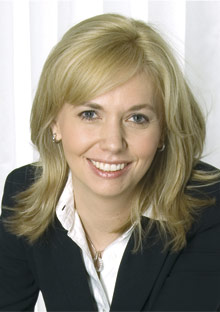
Photo: Courtesy of Jennifer Linder
Your Dermatlogist: Jennifer Linder, MD, Scottsdale, Arizona
"Two things change skin's texture: sun damage, which makes the epidermis thicken and feel leathery, and the natural aging process. As you get older, your dead skin cells shed more slowly, and start to build up in your upper layer of skin. This buildup leaves your complexion rough and dull. First and foremost, you need a topical product that will speed up that cell turnover; I recommend a serum or lotion that contains retinol. These relatively mild over-the-counter vitamin A derivatives shouldn’t make your skin flake (which happens more easily when skin is already rough). After about two months of nightly use, your skin will feel softer and look more luminous.
You may also need to rethink your basic cleansing regimen. Many bar soaps are very alkaline and strip natural oils from the skin, making it feel rougher. Choose a creamy, non-soap cleanser instead. Afterwards, use a moisturizer that contains an effective humectant—like glycerin, urea, or hyaluronic acid—and has a thick consistency (think jars rather than pumps). To go a step further, look for a moisturizer that also contains lactic acid. For treating roughness, I prefer lactic acid over its alpha hydroxy acid cousin, glycolic acid, because it not only triggers cell turnover but is a natural humectant. And, of course, in the morning always apply sunscreen.
If you want to see—and feel—immediate results, a superficial chemical peel is a great option. In my office, I usually mix lactic, citric, and trichloroacetic acids with hydrating and brightening ingredients, and swab the mixture over clean skin. They lift away dead skin cells within a few minutes. You'll see results after one peel, but for the biggest payoff I recommend four to six over a period of several months. You will look glowy right afterwards; within two days you should expect a couple of days of flaking, so make sure to keep your skin moisturized to mitigate it."
Your options:
"Two things change skin's texture: sun damage, which makes the epidermis thicken and feel leathery, and the natural aging process. As you get older, your dead skin cells shed more slowly, and start to build up in your upper layer of skin. This buildup leaves your complexion rough and dull. First and foremost, you need a topical product that will speed up that cell turnover; I recommend a serum or lotion that contains retinol. These relatively mild over-the-counter vitamin A derivatives shouldn’t make your skin flake (which happens more easily when skin is already rough). After about two months of nightly use, your skin will feel softer and look more luminous.
You may also need to rethink your basic cleansing regimen. Many bar soaps are very alkaline and strip natural oils from the skin, making it feel rougher. Choose a creamy, non-soap cleanser instead. Afterwards, use a moisturizer that contains an effective humectant—like glycerin, urea, or hyaluronic acid—and has a thick consistency (think jars rather than pumps). To go a step further, look for a moisturizer that also contains lactic acid. For treating roughness, I prefer lactic acid over its alpha hydroxy acid cousin, glycolic acid, because it not only triggers cell turnover but is a natural humectant. And, of course, in the morning always apply sunscreen.
If you want to see—and feel—immediate results, a superficial chemical peel is a great option. In my office, I usually mix lactic, citric, and trichloroacetic acids with hydrating and brightening ingredients, and swab the mixture over clean skin. They lift away dead skin cells within a few minutes. You'll see results after one peel, but for the biggest payoff I recommend four to six over a period of several months. You will look glowy right afterwards; within two days you should expect a couple of days of flaking, so make sure to keep your skin moisturized to mitigate it."
Your options:
- Creamy daily cleanser (like Avéne Cold Cream Emollient Cleansing Gel, $22), morning and night
- Daytime moisturizer with glycerin, urea, or hyaluronic acid (like CeraVe Moisturizing Cream, $15)
- Sunscreen (like Aveeno Positively Radiant Daily Moisturizer with SPF 15, $16) every morning
- Nighttime retinol product (like RoC Retinol Correxion Deep Wrinkle Night Cream, $22)
- Four to six monthly chemical peels, $75 to 250 each




